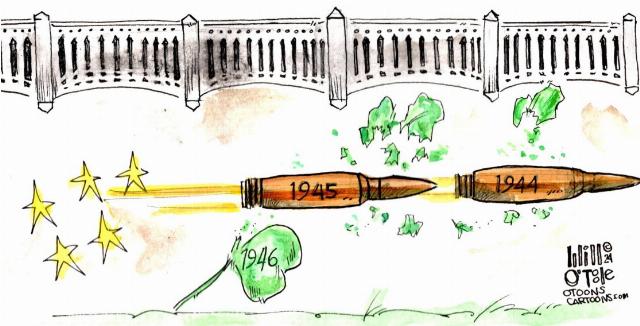Army and Notre Dame are set to face off for the 52nd time in a storied rivalry, with both teams competing for national championship relevance. This game marks the most significant matchup between the schools since the 1940s, a golden era when both programs stood as college football powerhouses.
While the 1958 meeting between No. 3 Army and No. 4 Notre Dame brought some intrigue, it occurred early in the season in South Bend, Indiana. Army triumphed 14-2 and ended that season ranked third nationally with an 8-0-1 record, the lone blemish being a tie with Pitt. That standout team was led by running back Pete Dawkins, who captured the Heisman Trophy that year.
Since then, Army has drifted far from championship contention, making Saturday night’s primetime showdown a rare opportunity to revive memories of a simpler time in college football—one less influenced by the commercial pressures that dominate the modern game.
What makes this matchup so compelling for passionate college football fans and potential new followers? It’s not just the stakes or the competition—it’s the rich history that continues to define this rivalry.

The Army-Notre Dame rivalry will renew its historic tradition this Saturday in the Bronx, as the two programs meet at Yankee Stadium—albeit the “new” Yankee Stadium, but the legacy of their iconic battles in this venue remains alive. The game, already set as a prime-time event, now carries heightened anticipation with both teams ranked in the Top Twenty, sparking hope for a classic showdown.
Notre Dame enters the matchup with its usual aspirations of a national title, poised to secure a spot in the newly expanded college football playoffs. Army, meanwhile, continues to build its program under more traditional recruiting and eligibility constraints. Unlike Notre Dame and many other schools, Army cannot offer NIL (Name, Image, and Likeness) deals, access to the transfer portal, or extended eligibility—tools that have reshaped modern college football. Instead, Army relies on a commitment to academics and service, balancing its identity as a military academy with the challenge of competing at the highest level of the sport.
Now a member of the American Athletic Conference (AAC), Army joins a league often considered a haven for teams left behind by the major conferences dominating the sport. These “super leagues” have cornered the market on television deals, media attention, and financial resources, further marginalizing programs like Army. While Notre Dame maintains its status as an Independent in football, it has aligned its other sports with the Atlantic Coast Conference (ACC) and plays several football games against ACC opponents.
This matchup hearkens back to the mid-20th century when Army was the undisputed king of college football and its Bronx battles with Notre Dame were legendary. From 1944 to 1946, under the leadership of head coach Earl “Red” Blaik, Army was a juggernaut, claiming consecutive national titles and decimating opponents with clinical precision. In this three-year stretch, Army compiled a 27-0-1 record, averaging over 40 points per game while allowing fewer than six points per contest. With Heisman winners Felix “Doc” Blanchard (“Mr. Inside”) and Glenn Davis (“Mr. Outside”) leading the backfield, Army’s offense dominated the era.
Notre Dame, while not as dominant during that period, was far from mediocre. The Fighting Irish posted a 23-4-2 record over those three years, finishing in the Top Ten each season and claiming the 1946 national title. However, Army routinely overwhelmed Notre Dame in their encounters, outscoring the Irish 107-0 in three meetings from 1944 to 1945.
The 1946 game, however, ended in a scoreless 0-0 tie, an outcome as surprising as it was historic. Despite the tie, pollsters awarded Notre Dame the national title by season’s end, favoring its convincing win over USC compared to Army’s narrow victory over Navy. That game marked the end of Army’s reign as a football powerhouse, a decline driven by the rise of professional football and the economic incentives it offered. Today, NIL deals and the prospect of professional careers make it increasingly difficult for Army to attract the nation’s top athletes, as Cadets must commit to years of military service after graduation.
While Army’s dominance may never return, this prime-time matchup at Yankee Stadium offers a moment to celebrate the rivalry’s history. Fans can reflect on the glory days of the Black Knights of the Hudson while enjoying a rare modern clash in a historic venue that echoes the past.










